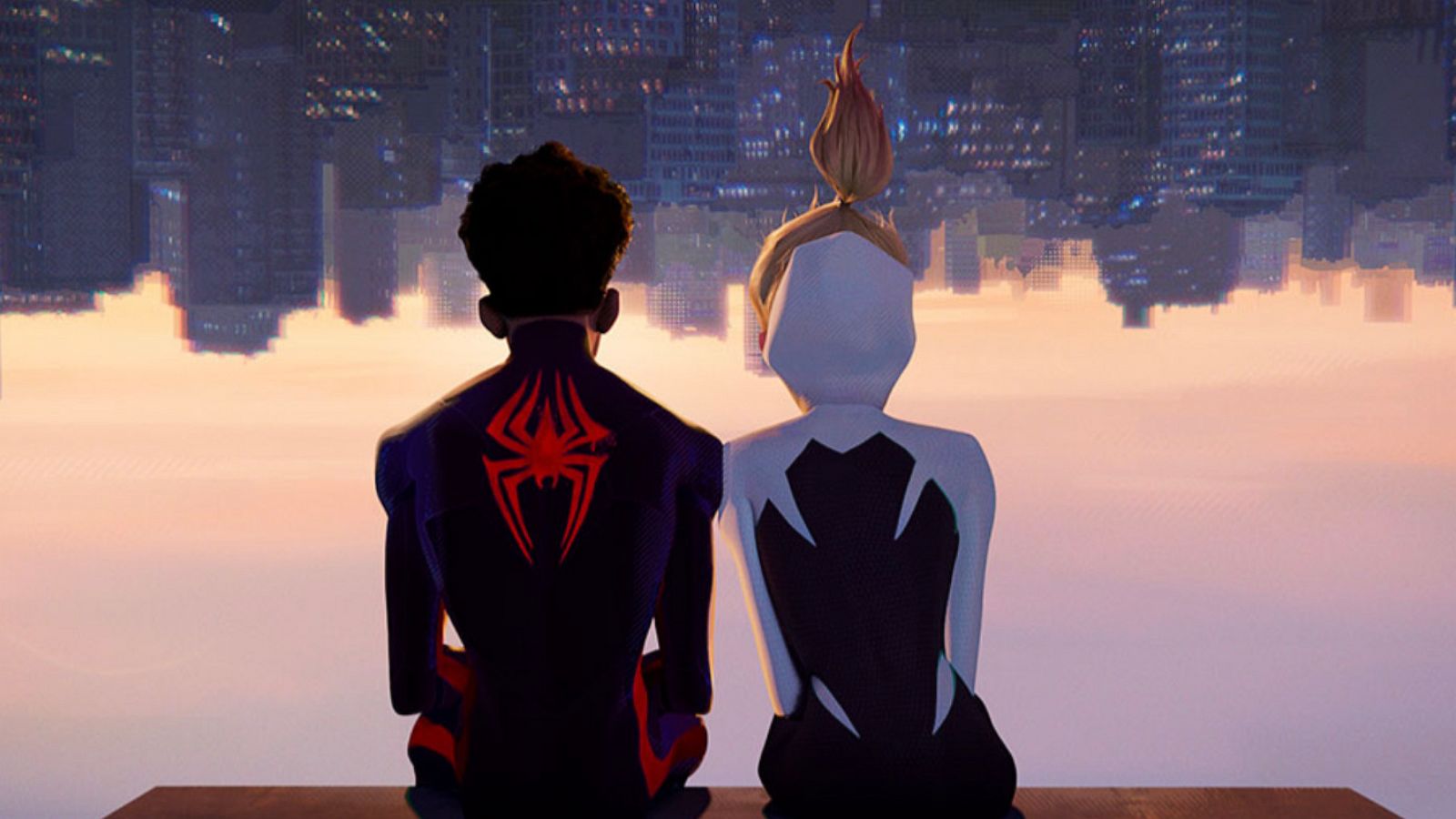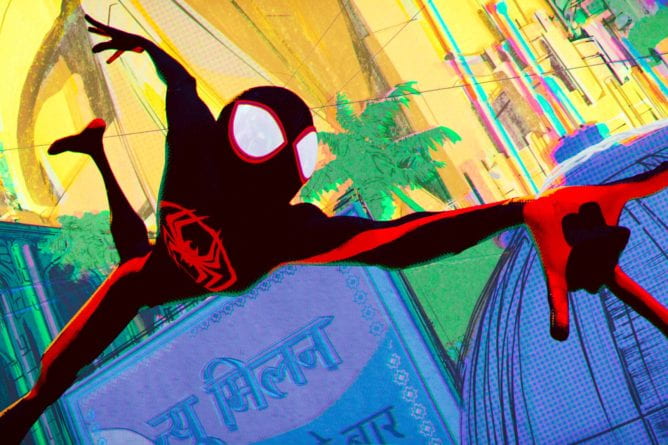Spider-Man: Across the Spider-verse (dir. Joaquim dos Santos, Kemp Powers, and Justin K. Thompson) is the long-awaited sequel to 2019’s Spider-Man: Into the Spider-verse (dir. Peter Ramsey, Rodney Rothman, and Bob Persichetti). The story picks up about a year after the last movie left off, as Miles (Shameik Moore) navigates his sophomore year of high school, keeping up with his family, and being Spider-Man. But this time around there’s one big difference: he’s doing it all by himself, without his friends from the Spider-verse. Or at least, that’s how things start out. But since when does anything go according to plan?

Across the Spider-verse is truly best experienced with little to no knowledge of how the plot will advance. However, it is important to talk about some of the characters, both returning and newly introduced. In Into the Spider-verse, viewers saw multiple iterations of Spider-Man from different universes, like Peni Parker (Kimiko Glenn) and Spider-man Noir (Nicholas Cage). Across the Spider-verse continues this tradition of showing new Spider-Men, in a way that only brings more enjoyment to viewers and more representation to wider groups. Hobie, aka Spider-Punk (Daniel Kaluuya), is not only a character who provides comic relief for viewers, but he is also an important piece of representation because he is a black punk rocker. For decades, alternative black kids have been erased from the narrative, even though there wouldn’t be things like rock and roll music or the punk movement without them. Bringing Spider-Punk to the big screen, and having his character be black, is extremely important representation for young viewers. Another example of this important representation is seen with Pavitr Prabhakar (Karan Soni), a Spider-Man from India who brings positive representation for young Desi children and even criticizes and corrects common mistakes made about his culture and language (i.e., explaining that “chai” means “tea”, and “chai tea” just means “tea tea”). And there are even more important pieces of representation! Miles, our title character, the Spider-man, brings important Afro-Latino representation as he is shown interacting with both his black and Puerto Rican heritage. Jessica Drew (Issa Rae) brings a pregnant black female character who is still able to dominate in the field. Across the Spider-verse has so much representation that is usually unseen, and does more than just tokenize characters, and that makes it a standout film that everyone deserves to see, because there is truly something for everyone.
Overall, not enough can be said to express how good Across the Spider-verse was. Not only did it exceed expectations in the intricacies of the plots and characters, but even seeing the way that the animation style has grown and developed since Into the Spider-verse has contributed to it being an amazing film. The visuals are stunning, and as the film shows locations across different universes, the experimentation with color and style is only that much more apparent–and brilliant. Viewers can easily see differences between universes as colors shift and change, and art and animation styles become their own. Though many people were upset that it took four years for Across the Spider-Verse to come out, it is easy to see that those four years were put to good use, as every single frame of the film is filled with care and effort. Across brings back the beauty of animation as a genre of film, allowing for elements beyond what is simply “things that could be live action” and instead changing how the entire movie is made and experienced.

Something else that Across the Spider-Verse does well is character expression. Many animated features will have trouble making their characters seem real, leaving behind the importance of accurate physical expression in light of other elements. But Across does no such thing. In every scene, viewers can see the nuance in the physical expression of characters and feel the emotions that they feel in a very real way. The intricacies and importance of seeing these characters being well-developed and fleshed out is not at all lost but is instead expanded upon in a way that allows for viewers to understand characters and their feelings beyond merely the dialogue.

Truly, there is only one problem with Across the Spider-Verse: it isn’t long enough. Though the movie comes in at a runtime of two hours and twenty minutes, it feels like absolutely no time has passed at all. Every scene is packed with ornate, intricate details and layers, and every action sequence is well-thought out and executed. Every component is essential in making Across the Spider-Verse a phenomenal work, and one that every person should try to see in theaters at least once for the chance to see it as it should be seen: on the big screen.
5/5 STARS
